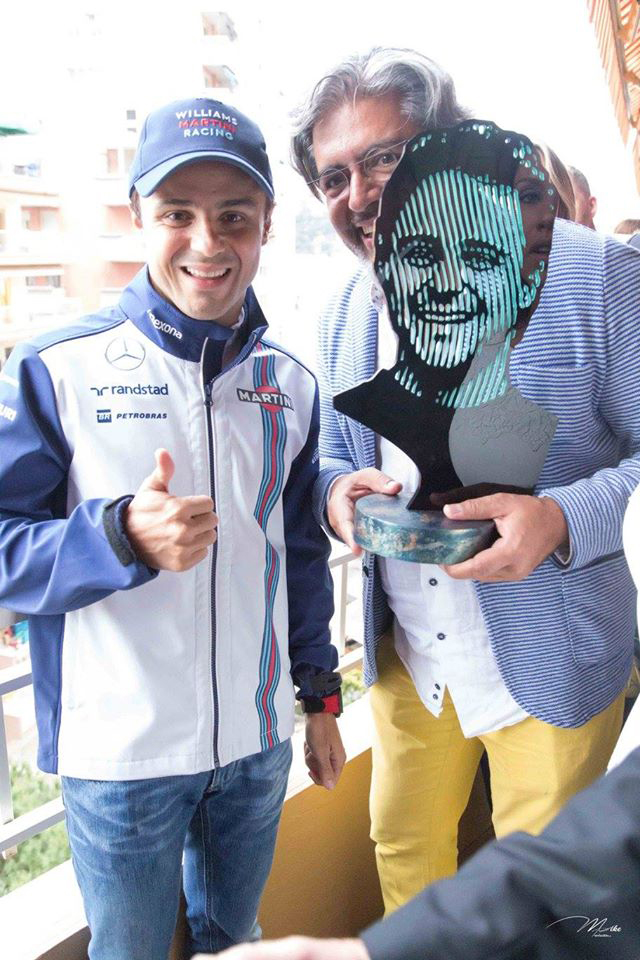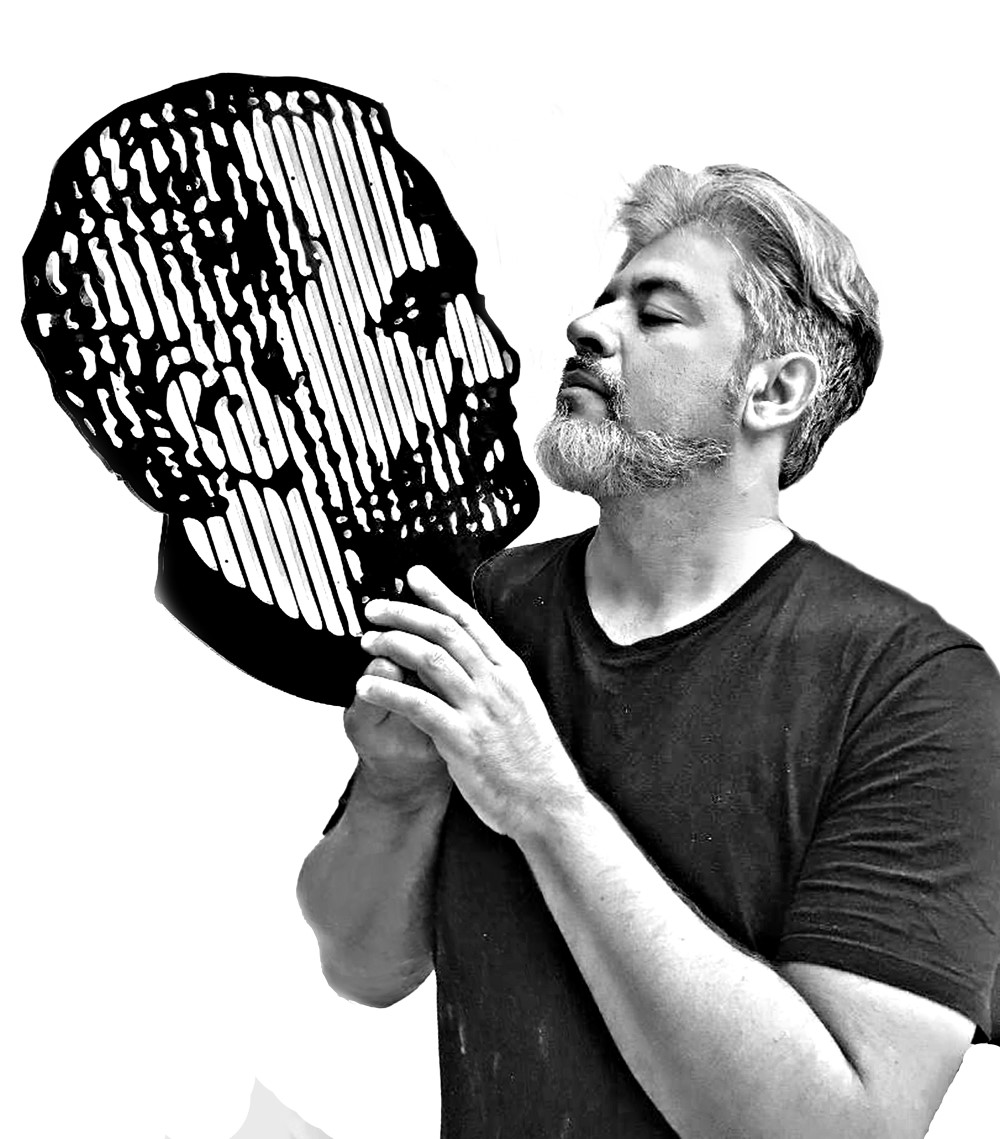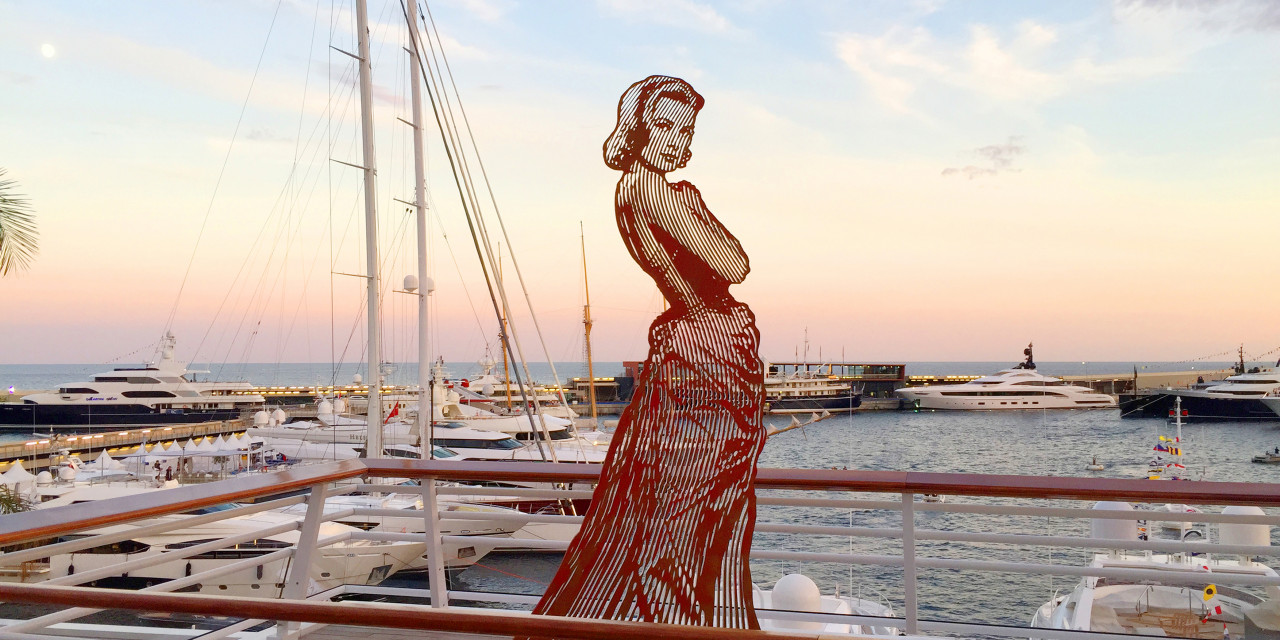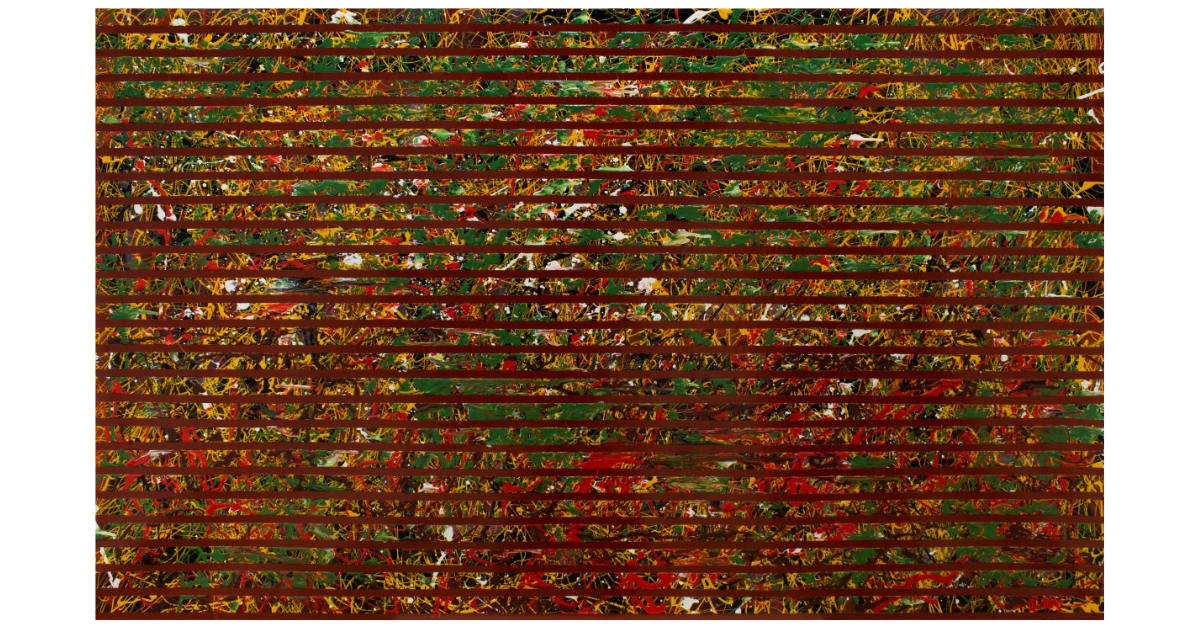Brazilian artist Marcos Marin has enjoyed a 40 year career that has seen him immortalise presidents, celebrities and rock bands in his trademark three-dimensional style. Monaco’s artist in residence reveals the roots behind his op-art iconography
Words: Will Moffitt
Marcos Marin is the man who worships icons. Whether he’s reviving the old Hollywood elegance of Audrey Hepburn and Grace Kelly or celebrating the brooding brilliance of Antonio Banderas, Marin is known for turning iconic faces – occasionally whole bodies – into three-dimensional optical portraits.
Marin’s works are hard to pigeonhole. Not only are they vibrant depictions of historical and contemporary characters but refractive portraits. His sculptures are like holograms: sharp silhouettes inflected by subtle changes in light and colour, while his paintings trick the eye into deciphering energy and movement on a still canvas.
Given its reputation as a hotspot for the rich and famous, it's no surprise that Marin is so lauded and established in Monaco. The principality is still a maker of and a magnet for iconic faces and Marin – who originally hails from Brazil – has enlivened its art houses, fashion shows, charity events and museums with his exuberant portraits. He has completed several commissions for Prince Albert II, most famously a public monument to his father Prince Rainier III, and paintings and sculptures of Princess Grace.

“My intention is to celebrate these iconographic impressions because we're not going to repeat that anymore,” Marin says. “These days the ‘icon’ moves so fast with social media and so forth, but with someone like Grace Kelly the legacy is marked into history. Every country and continent has different icons. I love learning and discovering iconographic history.”
Every artist has a backstory and unlike some of his celebrity muses, Marin did not explode overnight. In fact it was piano not painting that he originally sought to master. Born in Sao Paulo in 1967 to a cinema producer father and a mother who was an opera singer, Marcos began taking classical piano lessons at the Sao Paulo Conservatory aged five. He started a career as a virtuoso pianist and went on to study music in France. In parallel, he developed a passion for painting.
In 1990 Marin met the Op art pioneer Victor Vasarely while working as an assistant to a printmaker in Montmartre, Paris. Inspired by zebras and camouflage patterns the Hungarian-French abstract artist wanted his art to baffle and hypnotise. He crafted geometric designs and optical illusions to distort the viewers’ perceptions of space and form. Still a figurative painter, Marin was staggered by Vasarely’s gift for visual trickery.
“I was really shocked, I was tapping on my brain,” Marin recalls. “I thought: ‘that’s what I want to do’. I want to produce something [like that], but at the time I was very committed to figurative paintings. [In the end] my intention was to fuse iconographical stuff with optical techniques.”

Marin experimented with optical art, striving to produce works that could magnetise and entertain contemporary audiences.
He was awarded the Fiat Prize for his portrait of Christopher Columbus, produced for the 500th anniversary of the discovery of America at the Fiat Museum in Turin, and received the Phillips collection prize for his reinterpretation of Mona Lisa.
After travelling and working in the US in the early noughties he met Delphine Pastor, art dealer and scion of one of the principality’s most prominent families at Art Basel, who invited him to show his work in Monaco. Six months later Marin made quite the entrance at his first Monaco exhibition, selling around 50 pieces and cementing his status as Monaco’s new favourite iconographer.
Since then he has established a global reputation as a maker of historical iconographic monuments and portraits of presidents and royal family members. Under the patronage of fashion designer Pierre Cardin, who offered him a residency in the castle of the Marquis de Sade in Lacoste, French Provence, Marin has travelled the globe completing a range of commissions for the rich and powerful. He turned his hand to a depiction of former French president Nicolas Sarkozy – who asked for a portrait of himself and wife Carla Bruni.
“I never imagined that I’d be doing portraits of presidents… I’m not a political guy, I’m just an artist who portrays moments in a story,” he says. “Commercial art was always secondary for me. At the same time it gives me huge freedom to create and work on the projects that I want to pursue.”
Marin’s latest project, set to open next spring, is in Monaco where he is creating and installing 23 four metre-high sculptures in the plaza of Monte Carlo casino and the surrounding gardens.
In trademark fashion the collection will be a paean to power and popularity. Some of the world’s most famous faces will be smiling across the plaza, safe in the knowledge that their legacies are as solid and indelible as concrete. In the artist’s hands their iconic silhouettes are playfully emulated, if only so that they can dazzle viewers with their elegance and poise.
“My pieces celebrate a historical moment,” Marin says. “I love amazing images. It’s not only about beauty, but expression and power, and the way I feel. My intention is to reproduce this powerful natural combination.”








